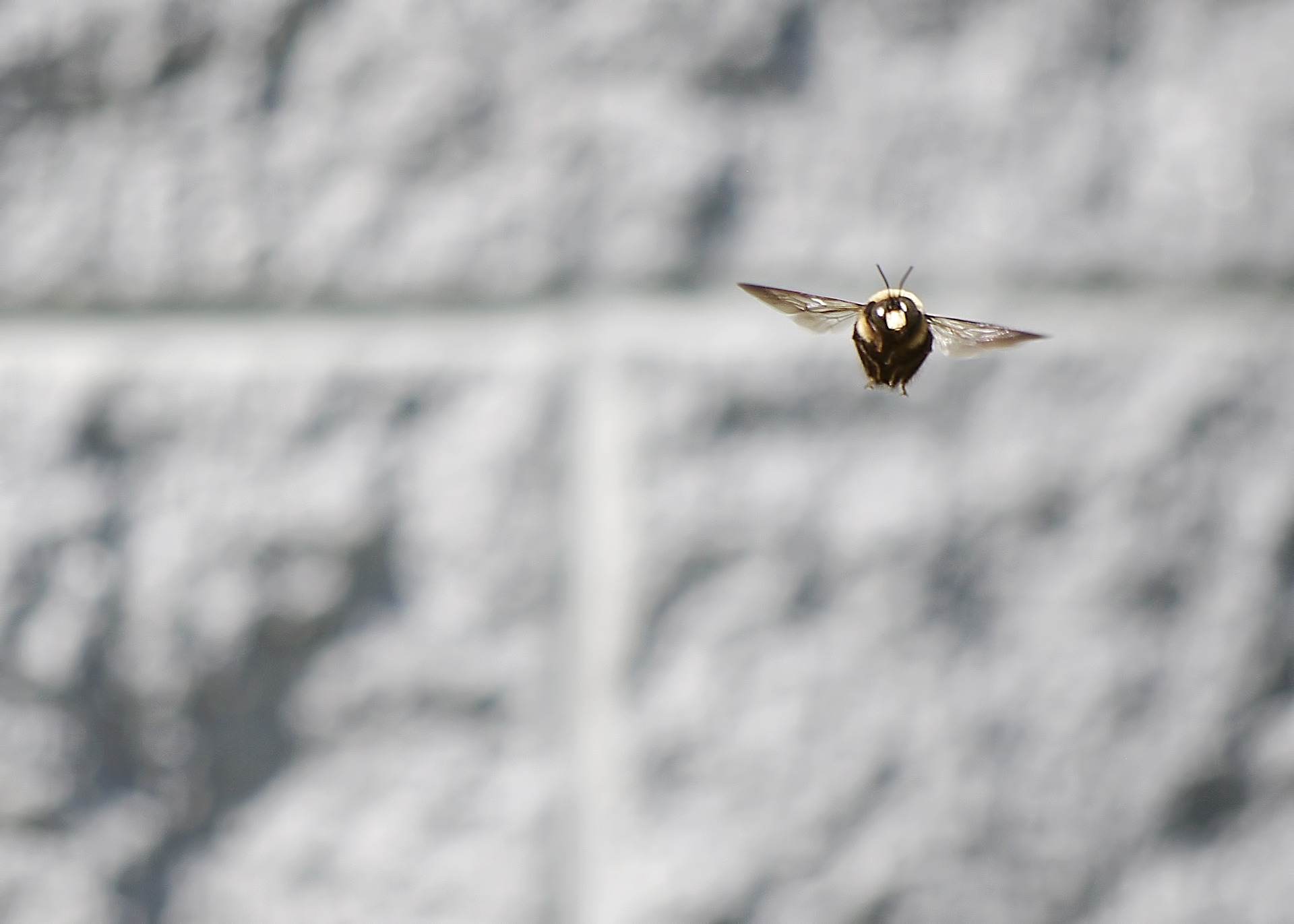For the last week, I’ve been watching some very active and persistent carpenter bees. There is much chasing, bouncing off window glass, and hovering as they menacingly stare me down as I sit behind my computer.

It’s mating season of course. Emerging from their overwinter slumber, males and females are busy making baby bees and constructing brood tunnels. I witness the flurry of activity every day. Eggs will be laid, larval will hatch, and then, in late summer, a new generation of adult bees will burst onto the world to grab a bite to eat. After which they will all head back into a borrow for their winter nap. Cycle complete.
It’s easy to observe the life cycle of many animals. Many of those cycles are defined by the season. For deer, fawns are born in the spring; antlers grow through the summer; breeding occurs in the fall; winter comes; antlers drop; and everything starts over again. Cycle complete.
There’s another large and active group of organisms breeding right now besides the bees.
Has your nose been itching? Have a sneezing fit? Eyes look like you’ve been in a smoky bar all night?
I’ve been getting pollen alerts on my phone for weeks now. It seems like every plant, bush, and tree in the northern hemisphere is having sex. They are in the business of making babies too. It’s just not as exciting or obvious.
All that “love” in the air is on its way to making seeds but those seeds won’t be participating in the love fest for years. Trees grow slow. We can’t watch the cycle unfold like we do with carpenter bees or deer. And that’s kind of a problem. It’s hard to study and learn about something that will outlast your career.
The Deer-Forest Study is entering into its 8th year. That’s about half the lifetime of some of our tagged does and longer than the life of many of our bucks. But that’s not even halfway to an acorn being produced on an oak tree.
We love deer but the other half of the Deer-Forest Study is, of course, the forest. We are trying to learn how deer and forests interact and what other factors might be involved. And trees grow slow.
Before trees are trees, they are saplings. And before that they are seedlings (aka deer food). Forests need seedlings to feed deer and saplings to become trees in order to make more seedlings. It’s the circle of life – plant style. How many seedlings make it to sapling stage? And how long does that take? We asked Phillip Jones, a Post-Doctoral Scholar, working on these and other questions for the Deer-Forest Study.
Here’s what he had to say.
“Observing the shift from seedling to sapling is not easy. Most seedlings disappear from the scene long before reaching sapling size. For example, in fenced plots from 2014 – 2018, we tabulated 256 red oak seedlings < 1-foot tall, 111 between 1-3-foot tall, 8 between 3-5-foot tall, and only 1 > 5-foot tall. Even without the danger of being eaten by deer, most seedlings die before developing into saplings. During the course of the Deer-Forest study, we have seen pulses of seedlings come along after a good seed rain only to watch their numbers decline precipitously in subsequent years.
There is no easy answer to how long it takes a seedling to reach sapling size. Seedlings under a dense canopy may spend more energy developing their root systems as opposed to their aboveground shoots while they wait for a canopy opening to develop. If they get lucky and an opening develops (either through natural overstory death or removal through harvest), the strong root system may allow for quick growth to “take the gap.” Seedlings that develop under relatively open canopies reverse this trend, spending energy on aboveground development to beat out other seedlings competing for a place in the sun. Thus, two seedlings may be years different in age, yet still be of similar size.
Unless seedlings are tagged and followed individually, we can only estimate the time required for seedlings to develop into saplings that have grown out of reach of deer and above the light competition of dense shrub layers. Studies of sapling development often cut and section saplings, counting the number of growth rings at different heights to develop a growth history.
Beech and sugar maple saplings in central New York grew about 2 ½ feet in 5 years in stands cut to 73 ft2/ac, indicating an average of 20 years to reach 10 feet in height. In New Hampshire, 4 species common to northern hardwood forests took only about 7 years to reach 10 feet in ½-ac gaps created by selection cutting, illustrating the greater focus on shoot development when more direct light is available.
Our plots are now 8 years old. We hope to begin seeing visible differences in seedling and sapling development this season, particularly between fenced and unfenced plots. However, because our plots are mostly under developed overstories, it may take several more years to determine how much difference there is between the average fates of seedlings when protected from herbivory or treated to control competing plants or improve soil conditions.”
In other words, it depends. AND it’s going to take a lot longer for us to find those answers.
My carpenter bees have been zipping to and fro all day consumed with the business of making baby bees so they can zip around next year. Trees are consumed with this task too. They just can’t be bothered to conform to that kind of timetable.
-Jeannine Fleegle and Phillip Jones, PhD